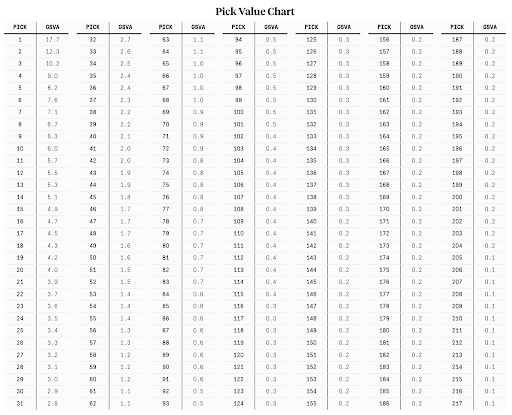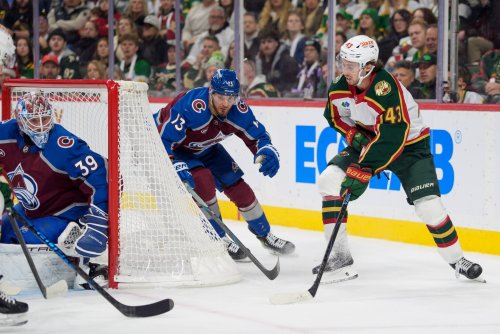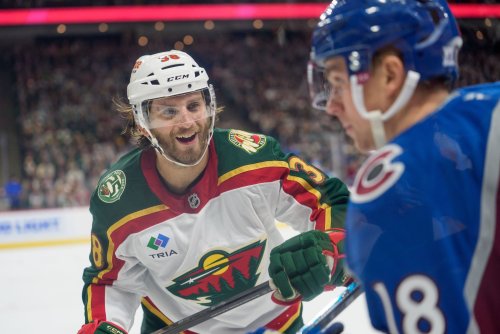
The NHL draft is only two weeks away, and it’s time to start thinking about draft moves. Where do the Minnesota Wild want to pick, and how much can they reasonably move around the board?
To understand what Minnesota might do, we must figure out what they can do. That starts with the market for past trades. It could be difficult if the front office wants to trade up from their 13th overall pick into the top ten. Over the past 13 drafts, no team has ever dealt a top-ten pick.
The Sound of Hockey does historical research on NHL trades and the market for picks. “The highest pick traded was the 11th pick,” he wrote, “which happened twice – once in 2016 in a swap for the 12th and 80th picks and once in 2019 in exchange for the 14th and 45th picks.”
However, by analyzing past trades, anybody can get a good idea of the trade value for each draft pick. It sounds complicated at first, but it’s actually pretty easy to wrap your head around. Researchers have pulled lists of recent pick-for-pick trades and used them to build a mathematical model. By definition, if both GMs agreed to the trade, the market must have considered it fairly even.
If you set each side of the trade equal to each other, the model can assign a value to each draft slot. Curtis Isacke from Sound of Hockey used 98 trades between the 2009 draft and the 2021 draft to create a mathematical value for each draft slot. To anchor the picks’ relative value, the value of the first overall pick is set to 1000.

With no trades in or out of the top ten, Isacke faced a challenge modeling those pick values. Theory can only take us so far.
To account for that, Isacke piggybacked on Dom Luszczyszyn’s research. While there were no trades in the top ten, players were drafted with those picks. Luszczyszyn’s chart below is based on the analytical value of players selected at those positions. With that information, Isacke was able to get a rough idea of their value.

The only limitation to Luszczyszyn’s chart is that it isn’t based on the trade market, so it may still undervalue how much NHL GMs want to hold onto their top-10 picks. That would make it even more expensive for Minnesota to make a significant move up the draft board.
So, based on theory alone, how high could the Wild trade up to? By Isacke’s estimate, a package of Minnesota's first- and second-round picks would be equivalent to the 8th or 9th overall pick. Luszczyszyn’s model puts it close to the 7th overall.
But if the GMs holding top-ten picks are as stingy this year as they have been, Minnesota would probably have to offer more to execute a trade. Whichever GM wants to trade back with the Wild has most of the negotiating leverage because sticking with their own pick isn’t as risky as passing on a top-ten selection. That makes it more realistic that Minnesota can only move up as high as 9th or 10th overall -- only three or four picks ahead of their current selection. That’s not nothing, but it’s a pretty small move.
Furthermore, even a small move like that could be difficult to pull off due to the perceived talent cliff in the 2024 draft. Draft analysts in the public sphere have noted that the top 10-12 picks are better than usual this year. For example, Corey Pronman of The Athletic ranked 11 2024 draft-eligible players as “top of the lineup” or better. That’s on par with his 2023 draft rankings, in which he rated 10 players in that tier -- and the 2023 class was one of the deepest in two decades.
Wild director of amateur scouting Judd Brackett said something similar on a recent episode of the Fellowship of the Rink podcast: “I just think the chances to move up will be difficult. Some teams have eyes on players they’ve liked. We’re 13, and if that range (of top players) is 12-14, most teams are liking the players in their grouping.”
If this class has another once-in-a-decade top-ten, why would another GM give up the right to select one of those prospects? It’s another reason Minnesota would have to pay an even steeper price than usual.
The Wild must also consider their plan for the rest of the 2024 draft. They may be reluctant to part with that second-round pick because they don’t hold another selection until the fourth round. Usually, when teams trade away their second-round pick, their third-round selection can be a small consolation to round out the draft class. However, Guerin traded away Minnesota’s third-round pick in the Marcus Johansson trade. If the Wild trades their second-rounder, they would be going all-in with their draft capital.
On top of that, Guerin’s front office has made hay in the second round during his Wild tenure. In his four drafts as Wild GM, Guerin has picked three seven times in the second round and three more times in the third. Second-round picks Marat Khusnutdinov and Riley Heidt made Scott Wheeler’s top-75 prospects this spring. Guerin also used top-100 picks to stock the defensive pipeline with Jack Peart, Ryan O’Rourke, and Daemon Hunt.
If he’s identified an efficiency there, would Guerin really give it up in exchange for picking ninth or tenth instead of 13th? It’s also noteworthy that based on Luszczyszyn’s research, the average outcome of players picked at 13 and 45 is closer in value to the 7th overall pick, so packaging those picks to get the 9th or 10th pick would be an overpay.
So, Minnesota might be reluctant to pull off a trade-up, and the GMs ahead of them aren’t likely to jump at the chance to trade down. It seems that the only way to make a deal is if one of the Guerin has his eye on one or two prospects that drop to the end of the top ten. Until draft night, nobody outside the Wild front office will know that information.
I don’t think the Wild will pull off a trade-up on June 28th. But if they do, they likely have a good reason for it, which should make draft night especially exciting for Wild fans.
Think you could write a story like this? Hockey Wilderness wants you to develop your voice, find an audience, and we'll pay you to do it. Just fill out this form.







Recommended Comments
Join the conversation
You can post now and register later. If you have an account, sign in now to post with your account.
Note: Your post will require moderator approval before it will be visible.